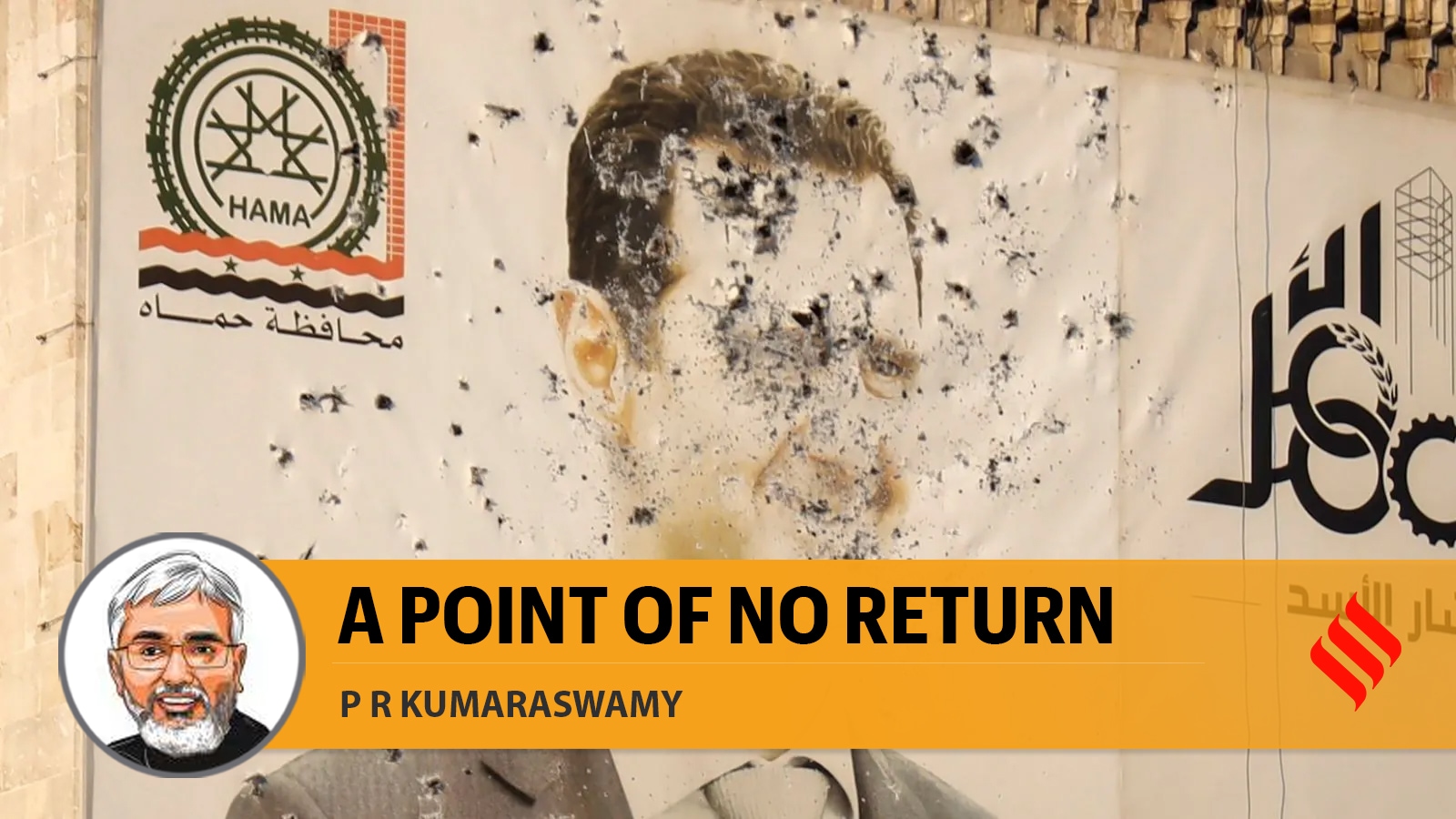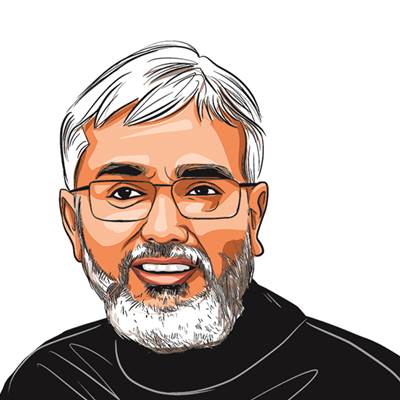Dec 10, 2024 13:14 IST
First published on: Dec 8, 2024 at 12:00 IST
In a swift and unpredictable operation, rebel forces have overrun Damascus and toppled the Assad regime. In a matter of days, following the fall of Aleppo, the second largest city, the fate of President Bashar al-Assad was sealed in the early hours of Sunday. Indeed, his ancestral hometown, Qardaha in the Latakia Province in the northwest — where his father Hafez and brother Basil were buried in the family mausoleum — was already under the control of the rebel forces.
Assad became the last of the Arab leaders to be toppled following domestic unrest in the city of Daraa, closer to the Jordanian border, on March 6, 2011. For over a decade, he survived, primarily due to the commitment and loyalty of the Assad-Army-Alawite triumvirate, and they swam together and survived. When this proved insufficient to counter dozens of rebel forces supported by various regional and extra-regional powers, Assad reached out for military help from Iran, Russia and Hezbollah. The decade-long active Russian intervention, which began in September 2015, shored up the beleaguered Assad regime and also prevented the international community, especially the United Nations, from actively intervening in ending the civil war. For their part, Iranian and Hezbollah fighters fought alongside government forces to recover and restrain rebel gains.
During this period, some Arab countries were critical of Assad for not “listening” to the voices of Syrians and for prioritising personal survival over the larger interest of Syria. The persistence of the Assad regime resulted in the Syrian expulsion from the Arab League in November 2011; however, the survival of Assad resulted in the League revoking its decision in May 2023, signalling the Syrian return to the Arab fold. In recent months, several Arab countries, including Saudi Arabia and the UAE, began courting Syria, and they even hosted President Assad. The restoration of Iran-Saudi Arabia relations — mediated by China in March 2023 — partly improved the situation. However, weekend events have radically altered the situation in Syria and beyond.
The end of the Bashar regime comes against the backdrop of a volatile and highly charged Middle Eastern order following the October 7, 2023, terror attacks by Hamas against Israel. One, despite the huge civilian casualties, hardships and widespread international criticism, Israel’s military strategy brought some tangible, radical and tectonic shifts. There is considerable destruction and downgrading of the terror infrastructure of Hamas and Hezbollah, marked by the elimination of key figures of the militant groups, including Ismail Haniyeh, Hassan Nasrallah and Yahya Sinwar. These measures might not have completely eliminated the threats facing Israel, but the military capabilities of Hamas and Hezbollah are significantly downgraded.
Two, the military weakening of Hezbollah was accompanied by its unpopularity over its parallel foreign policy at the behest of Iran. This led to considerable resentment against the group within Lebanon and forced the Shia militant group to accept a temporary ceasefire with Israel. Among others, the ceasefire deal called for the pullback of Hezbollah militants beyond the Litani River or about 30 km north of the Israel-Lebanon border. Hezbollah was able to overrule this demand in the past, but not under current circumstances. Moreover, the involvement of Hezbollah in the Syrian civil war was unpopular both inside Syria and Lebanon, and the latter ended up hosting over 1.5 million Syrian refugees, who account for nearly 25 per cent of the Lebanese population. In the eyes of several Lebanese civilians, by rallying around and fighting for the unpopular Assad regime, Hezbollah has directly contributed to the influx of Syrian refugees. The Lebanese discontent over the Syrian civil war, some believe, contributed to the intelligence leaks that resulted in the Israeli assassination of Nasrallah last September.
Three, the Islamic Republic of Iran, which leads the anti-Israeli forces in the Middle East under the banner of the Axis of Resistance, is internally weakened. Dispelling regional fears and contrary to its public rhetoric, Tehran chose not to respond to the October 26 Israeli strike believed to have been carried out by 100 fighter jets against 20 Iranian targets. Asking its proxies to pursue resistance while maintaining strategic silence signals the weakness of the Iranian strategy. Its options are extremely limited in light of the military defeats and setbacks suffered by its proxies. In the wake of Donald Trump’s election, even Houthis are signalling friendly overtures. These are manifested in the internal debates taking place in Iran. President Masoud Pezeshkian represents the pragmatic wing that opposes and resists a more activist and militant strategy pursued by the clergy-dominated hardliners in Tehran.
There are initial signs that the forces of Iranian Revolutionary Guards are already pulling out of Syria. Indeed, literally hours before the rebel takeover, the Iranian officials left their mission in Damascus. Moreover, while providing political asylum to Assad, Russia is preoccupied with Ukraine and is unable to shore up additional support for Assad.
With the collapse of the Assad regime, two things are certain. One, Syria, as we have known it geographically since the end of World War II, is no longer possible. Two, Bashar Assad destroyed the lasting legacy of his father: Political stability. As Defence Minister Hafez lost the Golan Heights to Israel in 1967, and now, President Bashar lost the whole country to the rebels, some of whom are ideologically closer to the xenophobic ISIS. Will Syria and the wider Middle East be better off without Assad? There are no easy answers, but most probably not.
The writer teaches contemporary Middle East at Jawaharlal Nehru University


